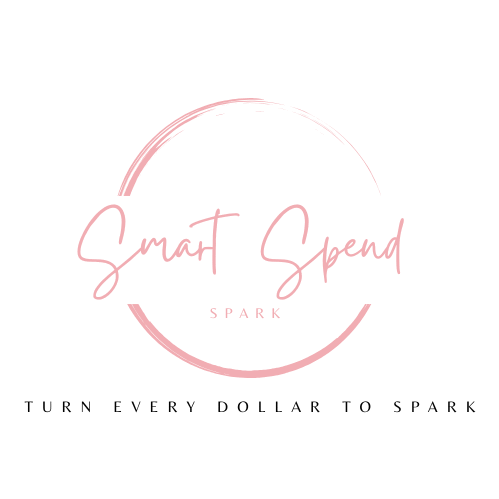Top 10 Ways to Earn Money Online (That Actually Work)
Hey everyone! Want to make some extra cash online but tired of the scammy stuff? You’re not alone. The good news is: there are lots of legit ways to earn money online—some fast, some slow, but many that can really add up. Whether you’re in the U.S. or Canada, there are options that can adapt to your skills, time, and resources. Here are 10 ways to earn money onlinethat really work .
1. Freelancing
Use Your Skills
What it is: Offering services online like content writing, graphic design, web development, social media management,logo design,video editor, virtual assistance, and many more skills in it.
Why it’s great:
- You can start small — maybe just 2-3 hours per week.
- Rates vary a lot depending on skill level, but even beginner freelance work can bring in decent extra income.
- As you build experience and client reviews, you can charge more. Sites like Upwork, Fiverr, Freelancer are dependable places to begin because these are huge marketplaces. you can give your services here.
Things to keep in mind:
- Establish a good profile / portfolio (show samples, feedback).
- Deliver quality and meet deadlines — repeat clients are gold.
- Be aware of fees that platforms take from your earnings.
2. Paid Surveys, Product Testing, and Microtasks
What it is: Doing small, simple tasks like filling out surveys, testing apps/websites, watching videos, completing offers.
Why it helps:
- It’s one of the easiest ways to start, requires no special skills.
- Good for spare time — evenings, waiting periods, etc.
- For example, platforms like Freecash, Swagbucks, Branded Surveys, and Ipsos i-Say are popular in Canada.
Limits & advice:
- Earnings per task are often small. Don’t expect this to replace a full-income immediately.
- You’ll sometimes be disqualified from surveys (if your profile doesn’t match). Create detailed profiles to reduce this.
- Multiple platforms = more opportunities.

3. Affiliate Marketing
What it is: Promote products or services and earn a commission when someone buys via your affiliate link.
How it works:
- You might have a blog, Instagram, YouTube channel, or even just post product reviews or recommendations.
- Join affiliate programs like Amazon Associates, ClickBank, or programs offered by brands.
Why it can be powerful:
- Once content is up and ranking / visible, it can bring in “passive” income.
- Low upfront costs—often, the main investment is your time.
- Good if you like content creation, writing, or anything you can talk about or review.
What to watch out for:
- Trust matters — if you promote bad products, your audience may lose trust.
- Earnings build slow. You need traffic / audience and consistency.
- Disclose affiliate relationships (legally and ethically).
4. Create & Sell Digital Products
What it is: Create something once (an eBook, course, template, printable, design assets) and sell repeatedly.
Why it’s a solid option:
- After your initial effort, a digital product can continue giving income with little maintenance.
- Platforms like Etsy (for printables), Gumroad, Teachable, Udemy, etc., make selling easier.
What to do to succeed:
- Focus on solving a real problem. If people need what you’re offering, sales climb.
- Quality counts—good design, clear instructions, nice visuals help.
- Promote well: use social media, email lists, or even collaborating with others.
5. Blogging / Content Creation
What it is: Start a blog, YouTube channel, podcast, or other content platform around a topic you’re interested in (e.g. tech, lifestyle, money, cooking, etc.).
How you can earn:
- Ads (Google AdSense, Mediavine, etc.).
- Affiliate links.
- Sponsored posts / partnership content.
- Product or course sales.
What makes blogging work:
- Patience: traffic builds over time.
- Good SEO / content that answers real questions.
- Consistency—posting regularly helps.
- Engaging with readers (comments, email) to build trust and audience.
6. Online Courses, Coaching, & Tutoring
What it is: Teaching what you know either in a structured course, or offering one-to-one coaching / tutoring.
Where it’s good:
- If you have a strength in something (e.g. school subjects, technical skills, fitness, personal development), that knowledge is valuable.
- Platforms like Udemy, Teachable, or even Zoom / Google Meet for tutoring.
How to maximize income:
- Make content high-quality and with good production / clarity.
- Market your offering clearly: show testimonials, reviews.
- Offer something unique: niche topics, special insights, etc.
7. Sell Physical Goods or Handmade Products
What it is: Use online marketplaces to sell things either items you no longer need (used goods) or handmade/creative items (art, crafts, prints, etc.).
Good marketplace options:
- Etsy, eBay, Facebook Marketplace, Amazon.
- For handmade goods, Etsy or local craft-market online versions are great.
Challenges:
- Shipping / logistics, especially across borders (U.S. vs Canada).
- Inventory risk (if items don’t sell).
- Costs: fees, shipping, materials. You’ll need to factor those into pricing.
8. Cashback, Rewards, and Sign-Up Bonuses
What it is: Earning money (or value) back from things you already do—shopping, bank offers, credit card sign-ups/app bonuses, cashback apps.
Why it’s low effort:
- You use the apps or cards you already might need.
- It’s passive: once you set up, you get rewards or cash back for purchases.
Examples:
- KOHO, Rakuten, etc., in Canada.
- Also bank offers / credit card signup bonuses (but always read the terms).
Watch-outs:
- Avoid overspending or buying stuff just to get rewards—then you lose.
- Be aware of fees, interest (if you use credit cards).
- Terms and conditions (sometimes minimum spends, or time limits) matter.
9. User Testing & Feedback / Website-App Testing
What it is: Companies pay you to test websites/apps, give feedback, report bugs, or review user experience.
Why it’s good:
- Usually pays more per task than simple surveys.
- Helps you build skills in UX, feedback, communication.
- Flexible tasks.
Examples:
- Sites like UserTesting, Userlytics, etc.
- Depending on the site, you might do video calls or record your screen/narration.
10. Content & Creator Membership Platforms
What it is: Grow an audience and offer exclusive content, perks, or community through membership or patronage (e.g. Patreon, membership tiers, or exclusive groups).
How it works:
- Share something unique with your community—extra content, early access, behind-the-scenes, coaching, etc.
- Use platforms like Patreon or set up your own membership system.
Why this is powerful:
- Gives you recurring income (members pay monthly).
- Builds stronger connection with your audience.
- Over time, you can combine with other methods (affiliate, product sales) to increase income
How to Pick What’s Best for You
With so many options, it can feel overwhelming. Here’s how to choose:
- Start with what you have
What skills do you already have? What do you enjoy doing a little? If you’re already decent at writing, freelancing or blogging might be a smooth start. If you enjoy creating art, maybe selling goods or designs is better. - Think about time availability
If you only have a few hours per week, go with something lightweight (surveys, cashback apps, microtasks). If you can commit more, you can aim for something more ambitious (courses, content creation). - Set realistic earnings goals
Do you want to make $200/month extra? $500? $1,000? Or more? Pick one method to try out first and see how it performs. Track income vs time spent. Adjust accordingly. - Avoid scams & shady promises
- If something promises huge money with zero work—be skeptical.
- Never pay to start (unless it’s for tools/learning, and you trust the source).
- Read reviews. For survey sites, look at payout requirements. For platforms, check their reputation.
- Protect your information (bank, identity). Use trustworthy payout systems (PayPal, direct deposit, etc.).
- Diversify slowly
Once one method is working well, don’t keep all your eggs in one basket. Combining two or three methods can help even if one slows down. For example, you might pair freelancing + digital products + cashback/rewards.
What You Can Do Right Now
Your 7-Day Start Plan
To get momentum, here’s a simple 7-day action plan to begin earning:
| Day | Action |
|---|---|
| Day 1 | Pick one primary method (e.g. freelancing or selling digital products). Research a bit — what platforms does it use, what other people are doing. |
| Day 2 | Set up accounts needed: create freelancing profiles or join rewards/survey sites. Get basic tools ready. |
| Day 3 | Build a simple task or item to sell / offer. If freelancing: make 1 sample gig. If digital product: draft the product outline or design. |
| Day 4 | Promote what you’ve made: share with friends/family, post on social media, or try small ads (if budget). Or in case of surveys / apps, start doing tasks daily. |
| Day 5 | Track your results: how many hours spent, what earned so far. Adjust: which tasks are more rewarding? |
| Day 6 | Try a secondary method: e.g. add cashback/rewards or signup bonuses. This diversifies income. |
| Day 7 | Review & plan ahead: What worked? What felt good? Make a simple plan for the next month with goals, time commitments, and potential earnings for each method. |
What to Expect
- In the first few weeks, earnings will likely be modest. That’s normal. Even a $20-$50 bump per week adds up.
- Growth tends to accelerate after you build momentum, especially for methods that “scale” (affiliate marketing, digital products, content).
- There will be trial and error. Some platforms won’t pay well, or some products don’t sell. That’s okay. Learn, tweak, keep going.
In my Opinion:
Making money online is absolutely possible—provided you’re smart, consistent, and don’t fall for too-good-to-be-true promises. Start with something that fits your skills and time, put in a little effort, and over time you’ll see things adding up. Mix in one or two methods that are more passive or recurring, and you’ll get closer to sustainable extra income.


